Exploring Central Japan: 5 destination ideas
In late September to early October of 2023, my friend Vivian and I embarked on a memorable journey through Central Japan. This article details our adventures, offering insights for those planning to show foreign friends around or anyone considering a visit to Central Japan.
- Kusatsu Onsen 草津温泉
- Mt. Chougatake 蝶ヶ岳
- Suwa Gokura 諏訪五蔵
- Chirihama Nagisa Driveway 千里浜なぎさドライブウェイ
- Kanazawa Castle Park 金沢城公園
Kusatsu Onsen
Kusatsu is one of the most famous Onsen resorts in Japan and it boasts the largest natural output of any hot spring in Japan. You will be blown away by the quantity and quality of spring water, as well as how much they care to bring all the minerals and goodness of spring water to Onsen. The hot spring sources in Kusatsu have temperatures that range from 50°C to nearly 90°C, although the comfortable Onsen temperature is around 40°C. To lower the temperature, instead of adding cold water, they let the water flow through long wooden troughs. You can actually witness this in Yubatake. You can also see signs talking about “don’t wash your body after bathing” as they are good for you and your skin.

During our trip, we stayed at the Ryokan called Boun for two nights. Boun is a traditional inn with a rich history dating back to its founding in 1599. It’s conveniently located near the center of Kusatsu, Yubatake. There are three different kinds of in-hotel baths, which is just the right amount so that you can try several different things but you don’t feel like you’re missing out by not trying out all of them.
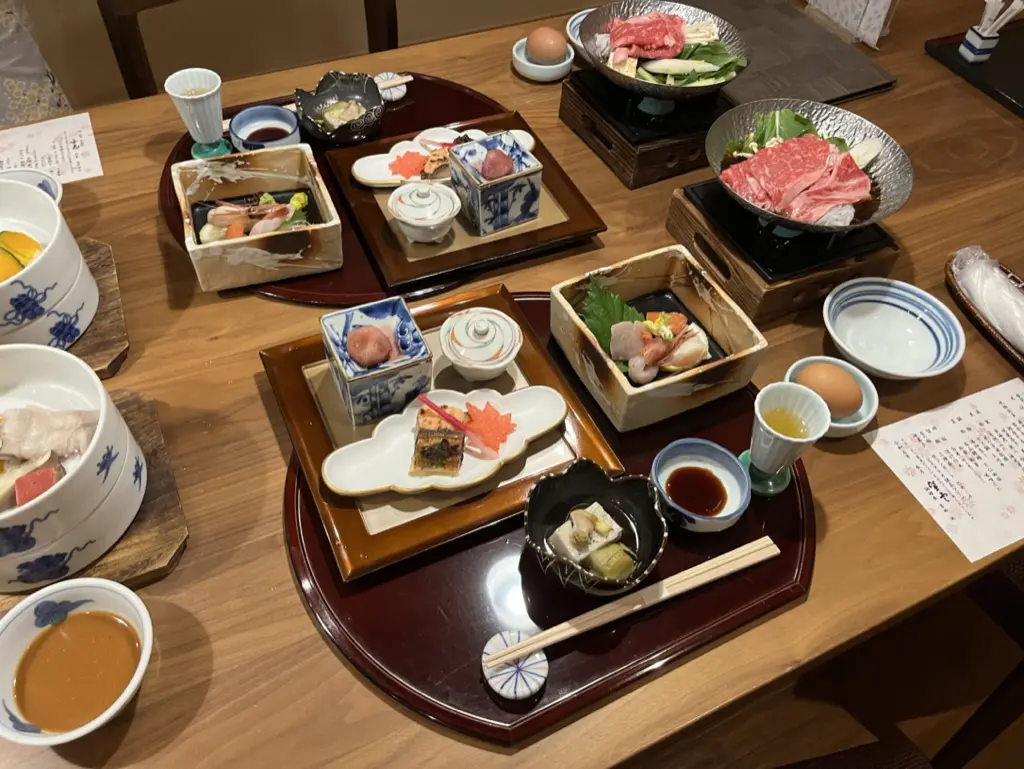
Kusatsu offers a variety of public baths, including three major ones. While we wished we could have visited them all, limited time and the recommendation of bathing no more than three times a day (you see signs about it) made it a challenge. Nevertheless, I highly recommend visiting the Sainokawara Open-Air Bath, which we had the opportunity to experience. We were impressed by the bath’s size, the natural beauty surrounding it, and the water quality.

One of our goals in Kusatsu was to visit the Jigokudani Monkey Park, which is about an hour’s drive away. However, when we arrived around 2 pm, all the monkeys had already returned to the mountain, and we missed seeing them. Monkeys are usually not in the hot spring during early autumn, so you might only see them hanging out or occasionally dipping in for food. I recommend checking the monkey schedule on social media before leaving Kusatsu to plan your visit accordingly.
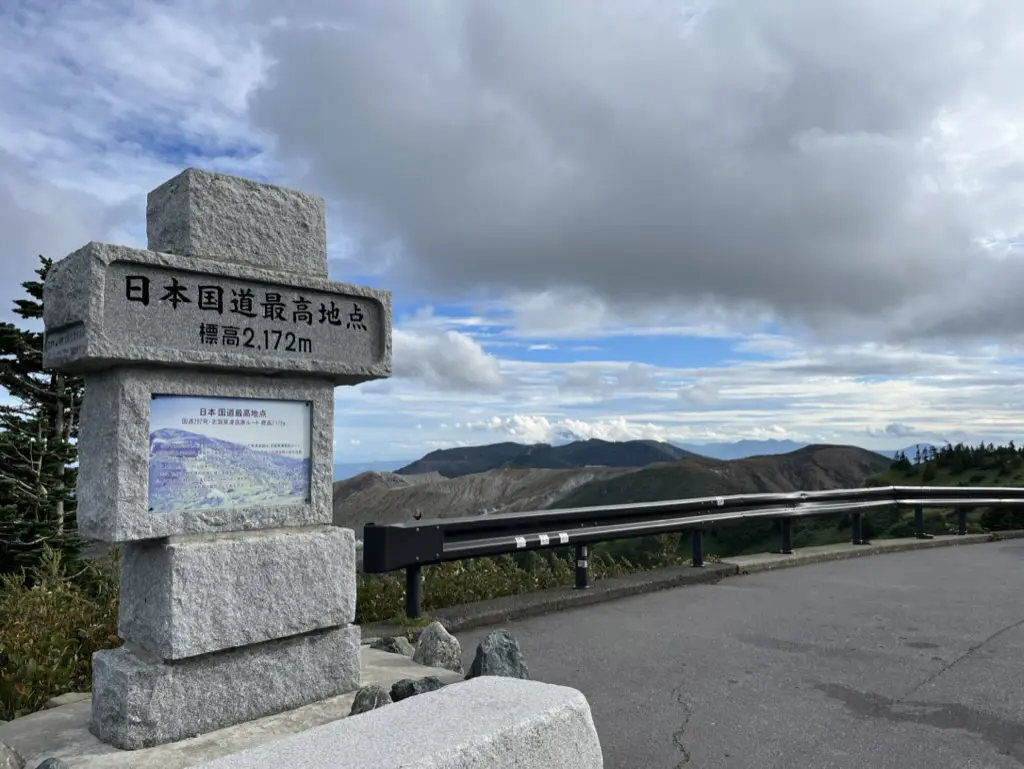
However, driving from Kusatsu to the monkey park is not really a bad thing to do. You’ll go through the active volcano area so you can smell sulfur so much (well, maybe that’s not a good thing), see some steam coming out from the ground, or see some shelters for the volcano eruption. Though, the view is pretty stunning and also you can maybe see monkeys on the road! We actually spotted many monkeys, even with babies on the road.
Kusatsu’s major downside is its location, which is not easily accessible from Tokyo. There is a direct bus that takes 4-5 hours, or you can take a train and transfer to a bus, although this transfer may be a bit challenging for foreigners. The journey still takes about 3 hours. If you’re seeking an Onsen experience in a more convenient location, consider checking out Hakone or Atami.
Mt. Chougatake
I’ve been telling Vivian about the Japanese hike experience, and how I was missing the Onsen-after-hike when I lived in the US. To experience this, we decided to do a hike together while Vivian is in Japan.
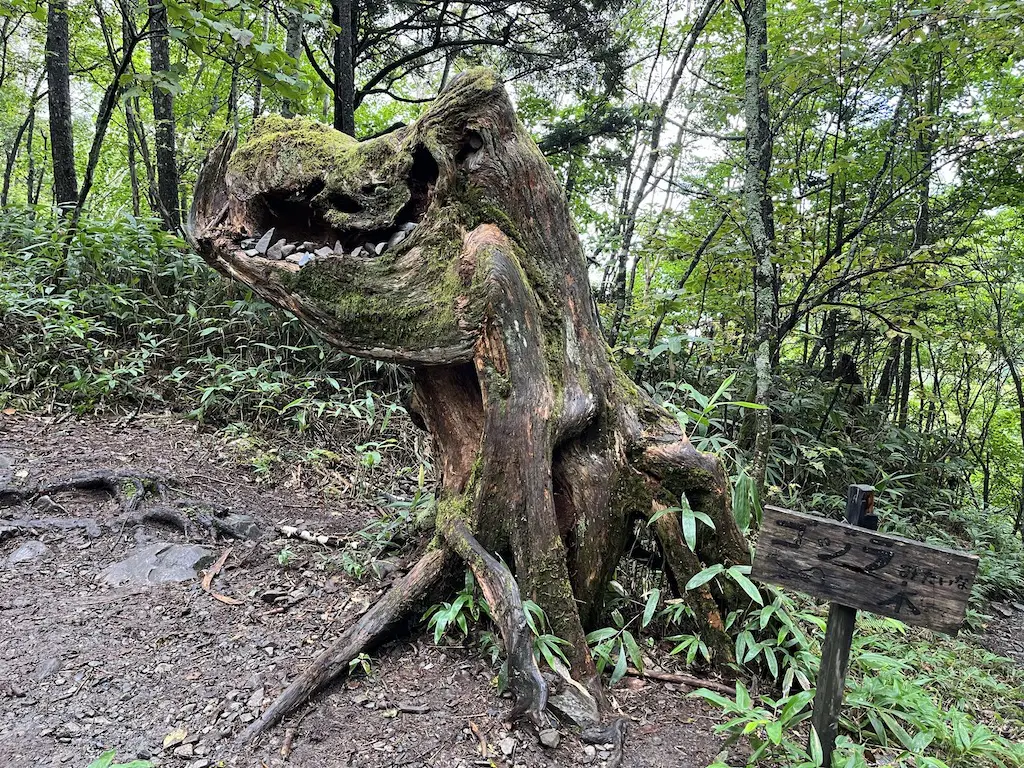
Mt. Chougatake (or Mt. Chō in Wikipedia) is located near Kamikochi. It is known for offering stunning views of other famous Japanese mountains, such as Mt. Yari, Mt. Hotakadake, and Kamikochi. It is also known to be not so intense, so it was good for us to avoid ruining our remaining travel by being super exhausted (though I’ll cover this more later as it didn’t go so much as we planned).
We left Kusatsu in the early morning and headed to the Mitsumata trailhead. There are several routes. The website of Chougatake Hütte (cabin) describes these routes really well but unfortunately only Japanese is available and many great tips are embedded as images. We were initially planning to take the Yokoo route, which we’d stay at Yokoo Sanso (Yokoo mountain lodge) on the first day, though the booking was really competitive (as it was becoming an autumn leaves season) so I wasn’t able to book it. Instead, we decided to take the Mitsumata route, where we’d leave the Mitsumata trailhead on the first day and stay at the cabin (Chougatake Hütte) located close to the peak, then go back to the Mitsumata trailhead on the second day.
We started the hike from the Mitsumata trailhead, which covers a distance of 6.0 km with a 1,400 m elevation gain. The trail from the Mitsumata trailhead to the cabin was estimated to take around 5 hours to complete. On the first day, we left the trailhead around 11 am, despite the recommendation to start by 10 am, due to a desire not to miss our Ryokan breakfast. The trail is well-maintained, featuring wooden stairs, although there were a few puddles from the previous day’s rain. Unfortunately, the cloudy weather on the first day limited our views, and we even encountered some rain during the night.
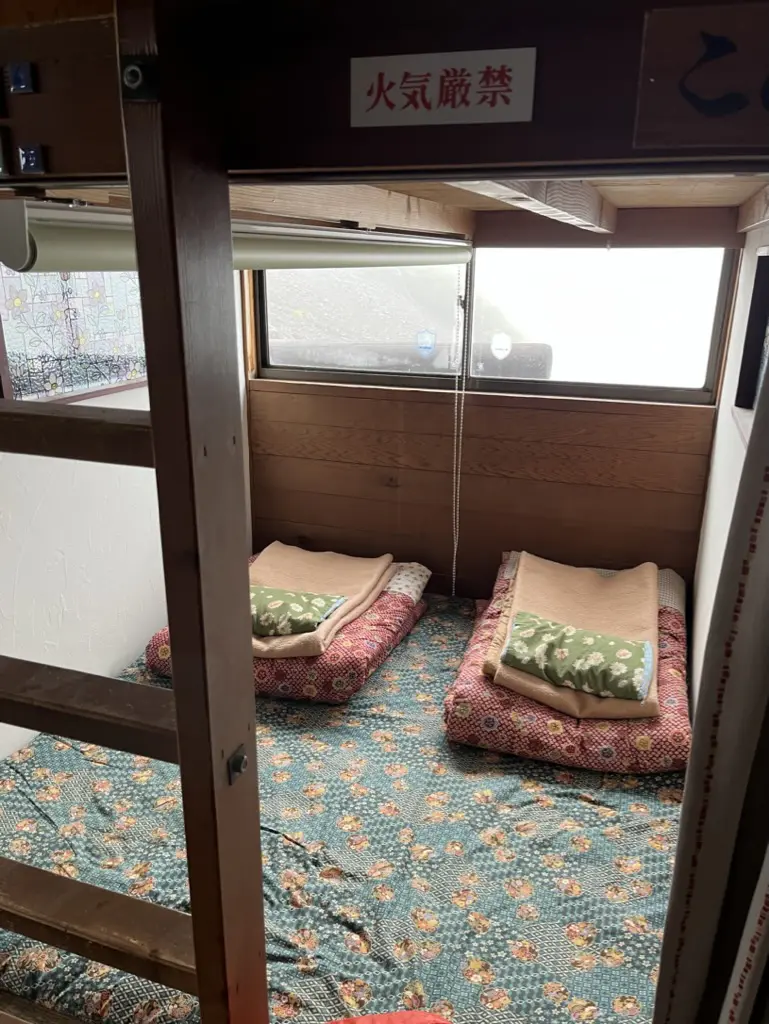
Once we arrived at the cabin, we were assigned a small two person futon. The cabin was cozy and pretty well equipped. I’ll mention more about the cabin and notes about the cabin later. The dinner started at 5pm, and we went to bed around 8pm or so after some good beer and sake.
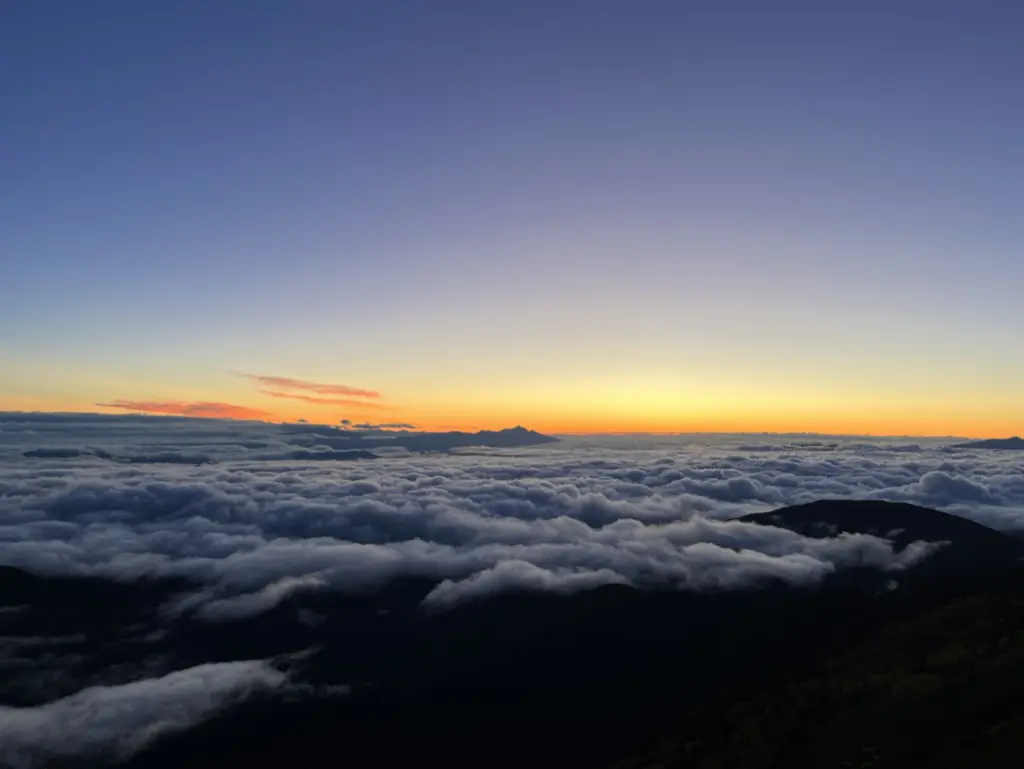
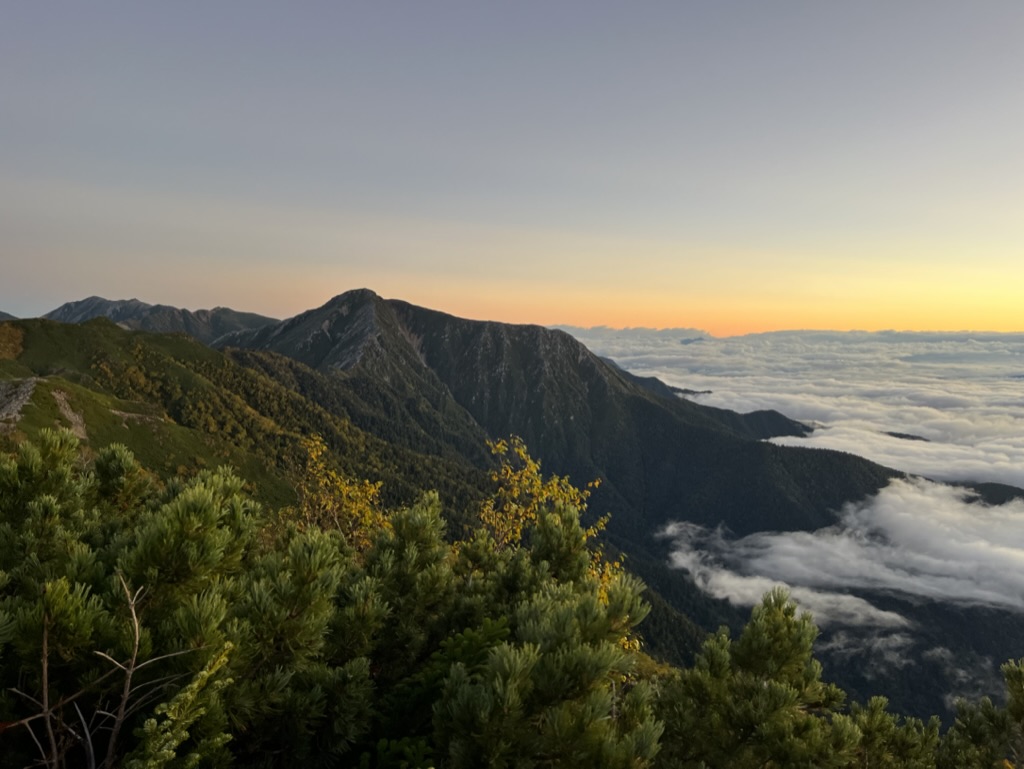
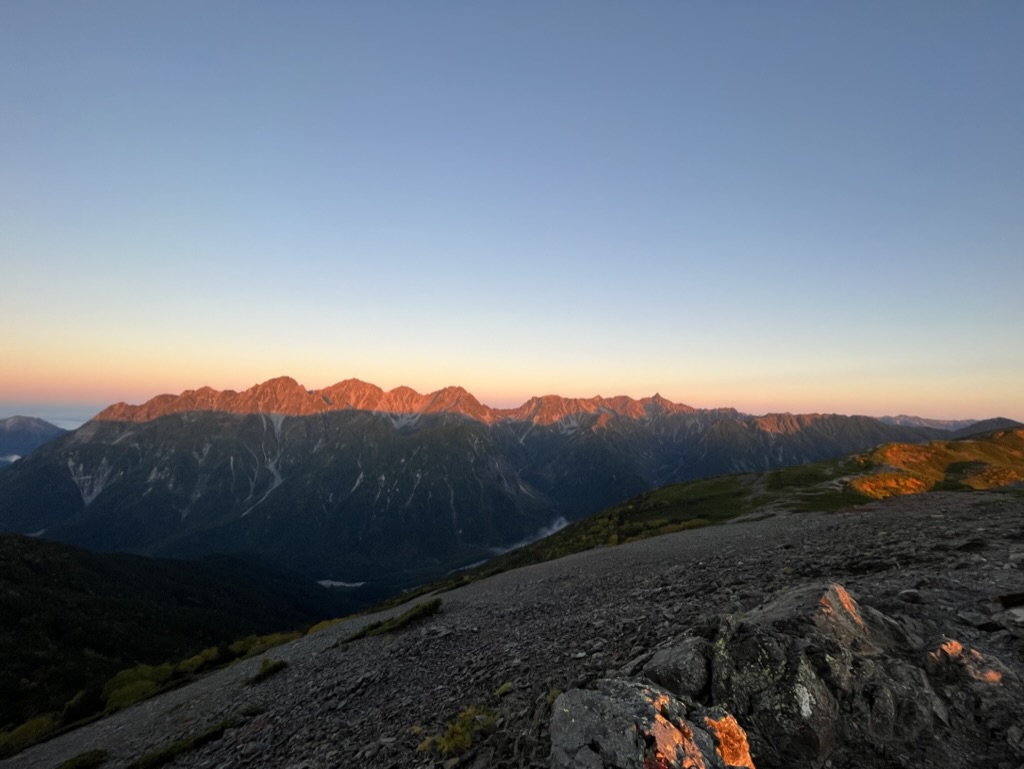
On the second day, we woke up early, a little after 5am, to catch the sunrise, which turned out to be a breathtaking experience. The clear weather allowed us to witness the stunning beauty of the Japan Alps, a sight that photos can’t do justice. Seeing the sunrise was an unexpected delight, as I wasn’t thinking it was possible due to the weather of the previous day. I’m really glad that we took this route, otherwise we weren’t able to see these views.
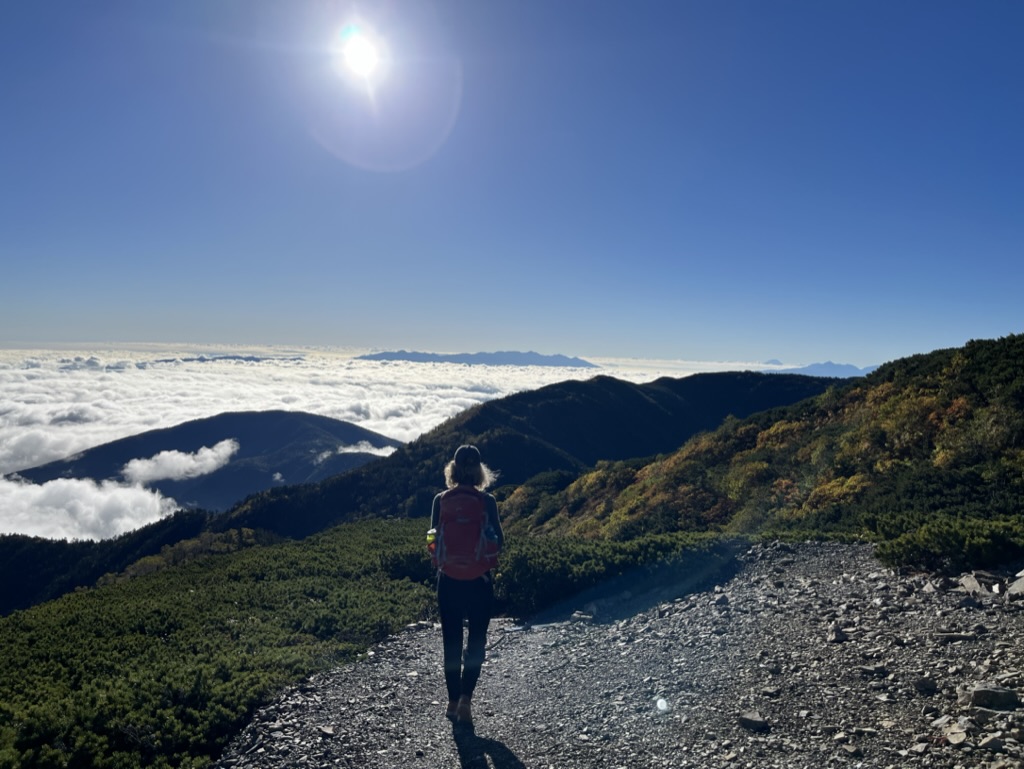
After breakfast, we left the cabin around 7am and went back the same route as we took. Descending was not as easy as expected, despite a good night’s rest as well as the estimated time to complete being 3.5 hours. It took us nearly as long to descend as it did to climb up, and it left us quite severe muscle ache that lasted a few days. I’d say that this trail is still moderate, but not suitable for beginners.
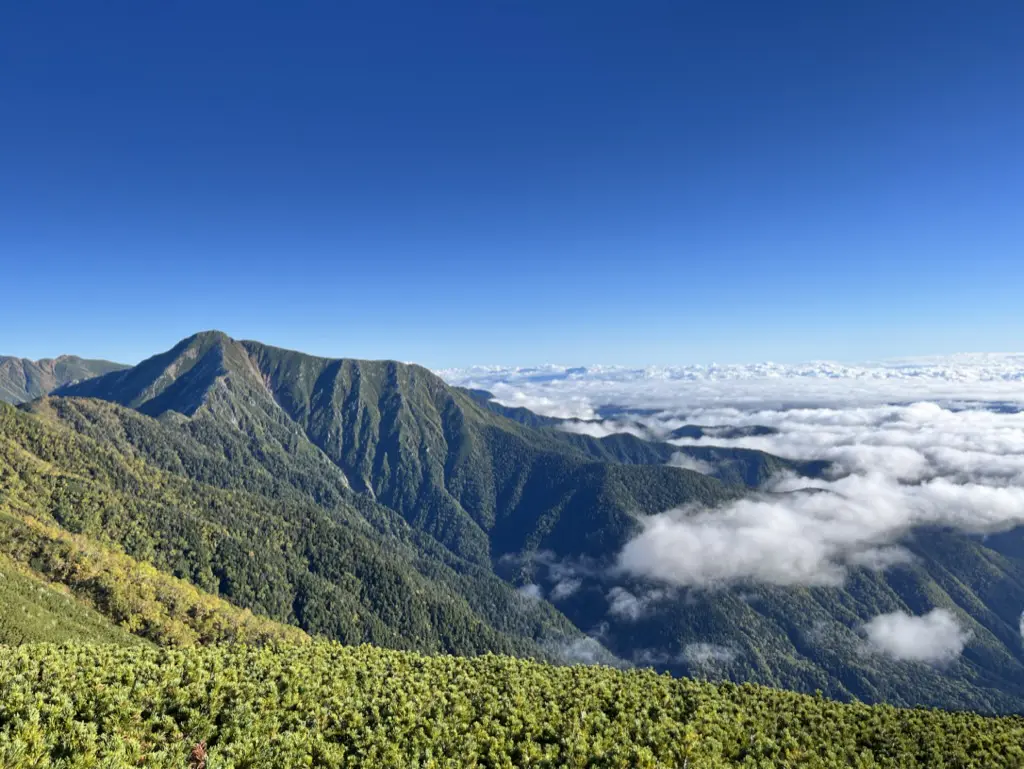
After completing the hike, we enjoyed soba noodles in Azumino, a place known for its delicious soba. Then, as planned, we headed to an Onsen for a refreshing bath.
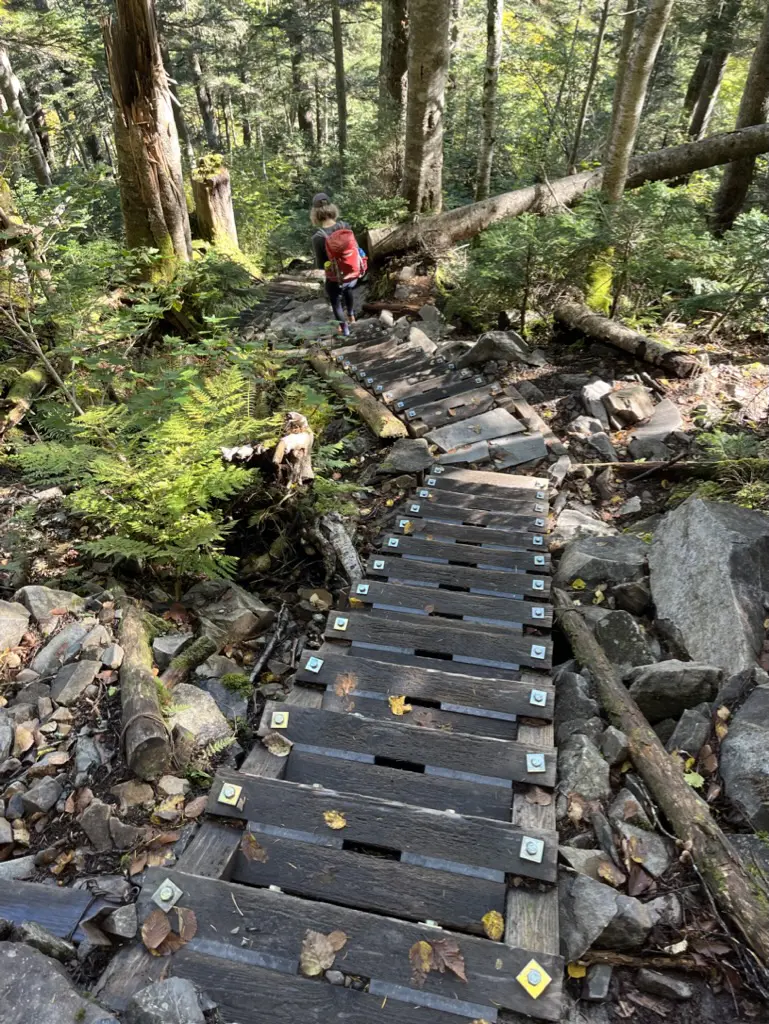
Several notes to leave for anyone who is interested in doing this hike and staying at the Chougatake Hütte cabin:
- They sell some alcohol and snacks (mountain price but worth it)
- Slightly competitive (outlet wise) but you can charge your phone fine
- It was spotty depending on the carrier but there is some cell reception too
- It was cold during the night time but it wasn’t terrible in the cabin, they also had some heaters
- You were not supposed to use any sort of soap including toothpaste so don’t bother bringing them
- The blanket is quite heavy and not so comfortable, so if you have some extra space in your backpack, I’d bring a sleeping bag
- They sell both cold and hot water, so you don’t need to bring water for two days
- The cabin also sells some lunch, if you can do some extra hike on the second day before going back to the Mitsumata trailhead without bringing the second day’s lunch
- So many things can be bought in the cabin so don’t forget to bring some cash
We stayed at the cabin on Thursday night so it wasn’t fully booked, but it was fully booked on Friday, also many people were climbing up on Friday while we were climbing down. If possible, I recommend that you try to do the hike during the weekday to avoid the crowd. There were some foreigners staying at the cabin other than us, a group of Canadians. They were doing a tour with a guide who can speak Japanese fluently. Given that the Chougatake Hütte website doesn’t have English translation as well as the cabin didn’t have many English signs, it might not be easy to do this route by yourself. If you’re doing the Mitsumata route, you also need to find a way to get there by car or taxi, which is also not easy for travelers. It might be a good hike to do after you’ve done several hikes in Japan and/or with a guide.
Suwa Gokura
After the hike, we stayed in Matsumoto, Nagano. Our next thing to do was a sake brewery tasting and crawling. Nagano produces quite a lot of sake, and there are many sake breweries. We wanted to find some place that is easy to go from Matsumoto by train, and found Five Suwa Gokura Sake Breweries. There are five breweries near Kami-Suwa station, which takes about less than an hour by train from Matsumoto, and they even have a self-tour pack, so we decided to do it.
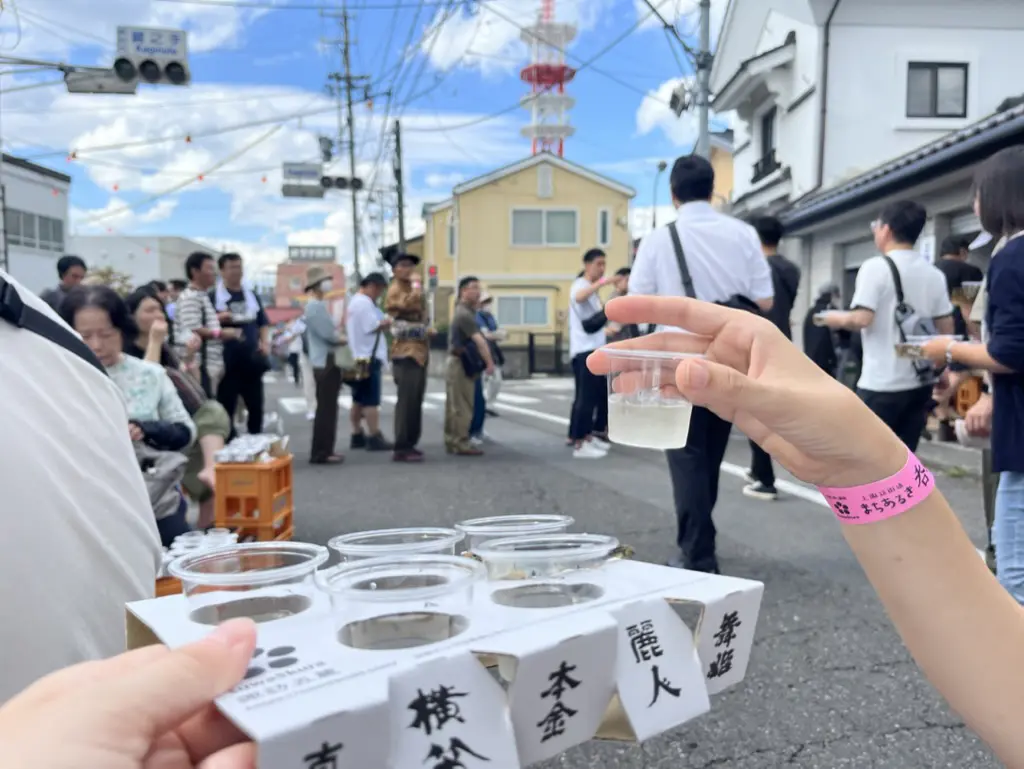
As we were researching, we realized that they don’t do a self-tour pack on September 30th, the day that we wanted to go, because they are throwing a special sake event on that day (上諏訪街道「まちあるき呑みあるき」). It was even more perfect to us, because it was an all-you-can-drink sake event with only 4,000 yen.
The event was a blast. The street where these five breweries are located was closed for the event, and you could taste 5-6 different kinds of sake from each brewery. Each portion was about 20 ml, and you had to line up to get them, which helped to not get drunk so much. In total, we tasted over 20 different kinds of sake and enjoyed delicious food from vendors.
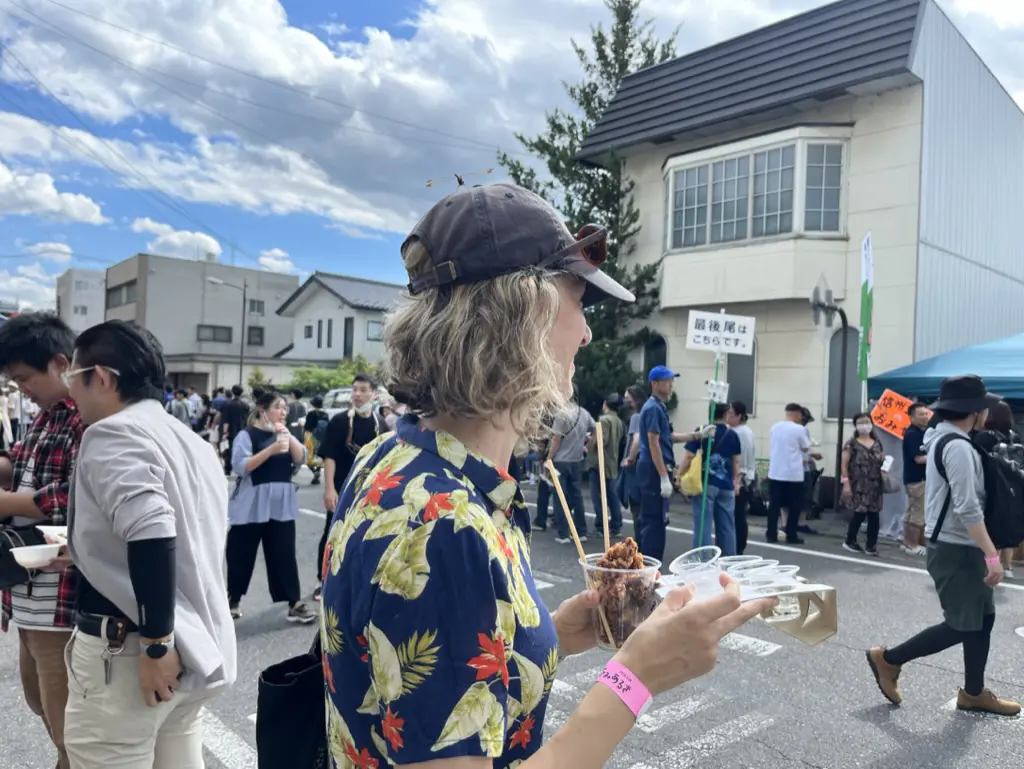
There were many “regulars” of this event, looking like they definitely knew what they’re doing. They even brought a special basket to hold their sake and snacks and wear it from their neck to keep their both hands free. Very smart.
Everyone was really nice to us aka foreigners (thanks to Vivian), but I think they were just nice to everyone, because everyone was somewhat drunk. Several people offered some snacks to us and we really enjoyed it.
You can see Sake festivals like this one in Japan from time to time and they offer an excellent opportunity to sample a variety of sake and immerse yourself in the atmosphere. If there is any festival happening during your trip, you should try it out.
Chirihama Nagisa Driveway
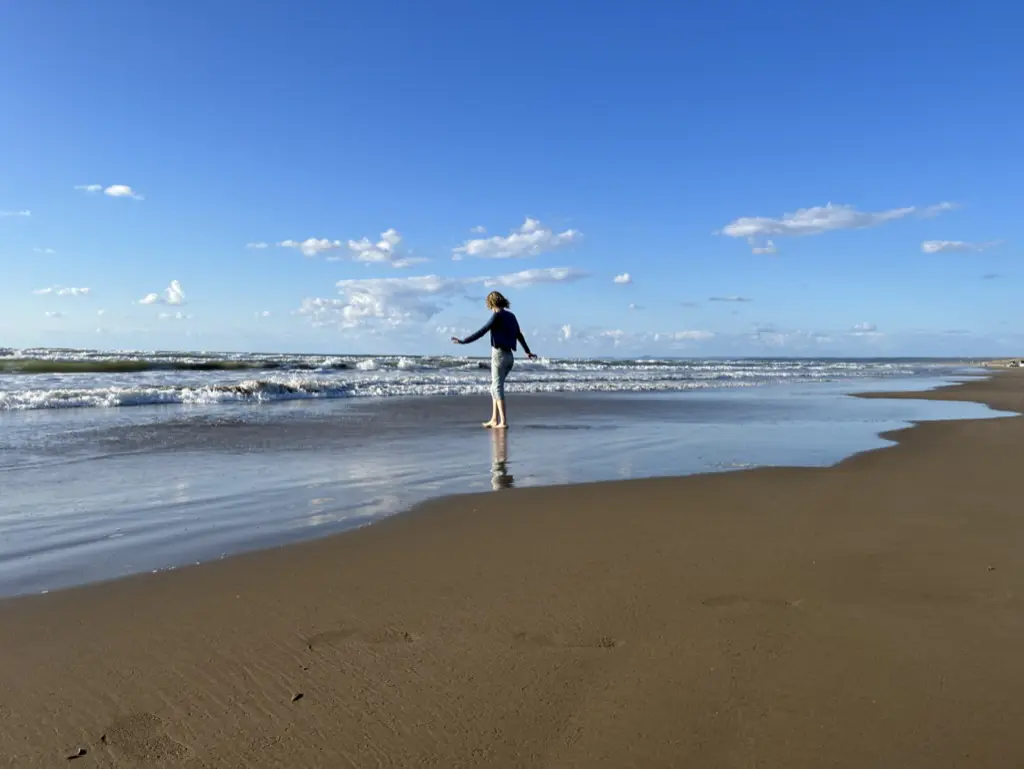
Driving in Japan would be a really unique experience for lots of foreigners, as we drive the opposite way compared to most of the countries. In Ishikawa prefecture, we have Chirihama Nagisa Driveway where you can drive on the beach. By going there, you can experience driving a car in Japan + driving on the beach. Chirihama Nagisa Driveway is a sandy beach that is open to cars.
From Kanazawa, you can get to Chirihama Nagisa Driveway in about an hour. At the end of the driveway, there is a rest stop with a foot bath. We left Kanazawa around 3pm and as we were taking a foot bath, we realized that the sunset was coming. There was also a sign saying “sunset beach”, so we decided to stay a bit in a foot bath until sunset, which was around 5:30pm.
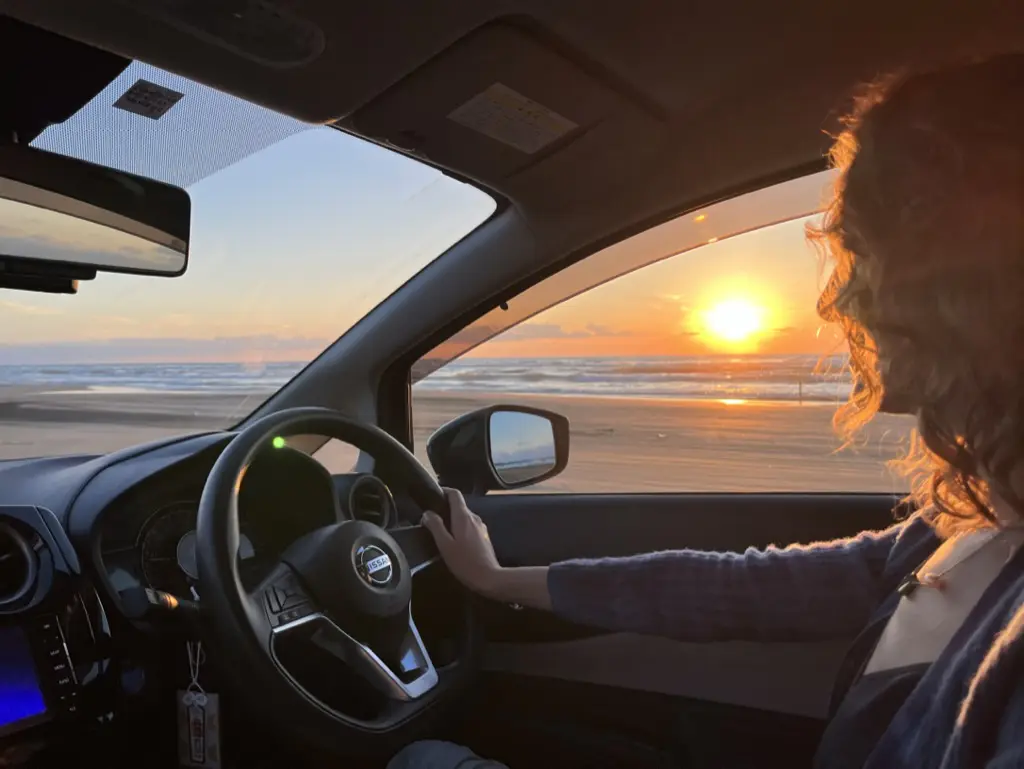
I’ve been to Chirihama Nagisa Driveway several times but I think this was the first time I went there during the sunset time, and I definitely recommend that you go there during the sunset as it was 10 times more beautiful than normal time. Driving on the beach itself is really great. Open a car window to hear waves and also feel the sea breeze. You could park a car at any point and just hang out there on the beach. You can maybe bring chairs and read books, some people were actually doing that.
There are many other things that you can do in Kanazawa so you can keep yourself busy in the city, but if you want to take some time to relax in Kanazawa/Ishikawa (and maybe try driving in Japan), this would be a good spot to go.
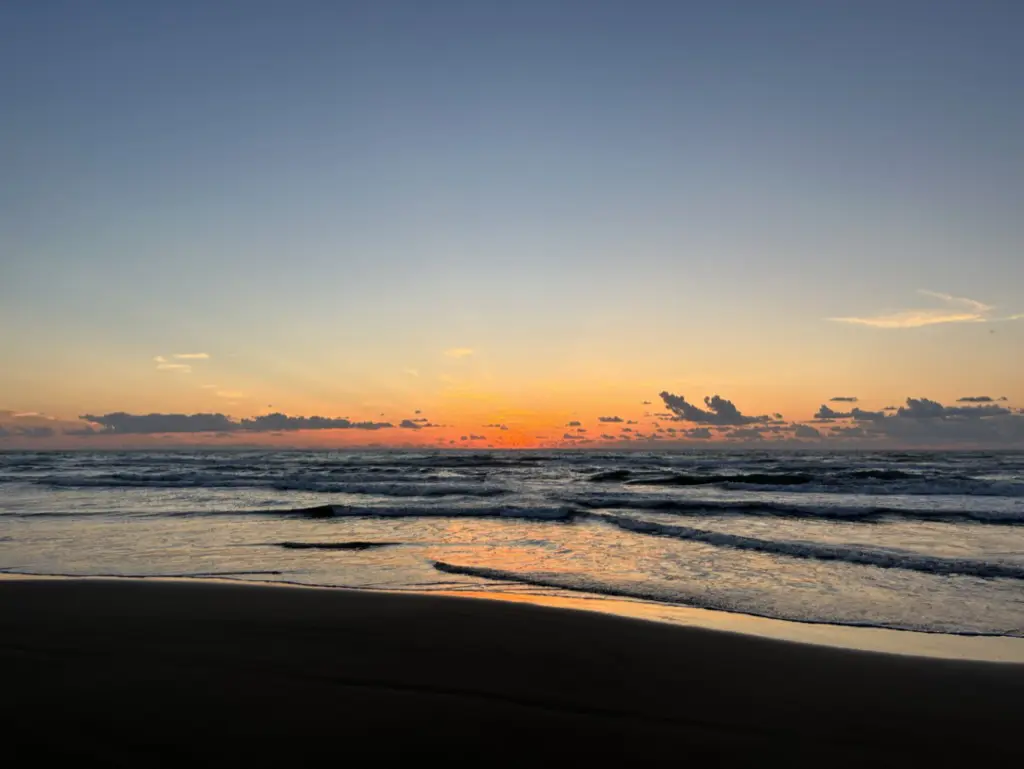
Kanazawa Castle Park
If you’re coming to Kanazawa, there are several must-do things, and visiting Kanazawa Castle Park would be one of them. It’s located next to Kenroku-en garden, which is another place you want to visit in Kanazawa. While Kanazawa Castle Park itself is good, it was special to us for our visit because teamLab was doing Digitized Kanazawa Castle. They did a really great job digitizing Kanazawa Castle and I highly recommend it. There are not only arts to see, but also arts to touch, which was fun. It’s only available until Nov 26, 2023, but the show from teamLab in general is highly recommended and they are doing art projects all over the place quite often. You may want to check out if they’re doing anything special for the area that you’re visiting and see if you can visit some of their exhibits.
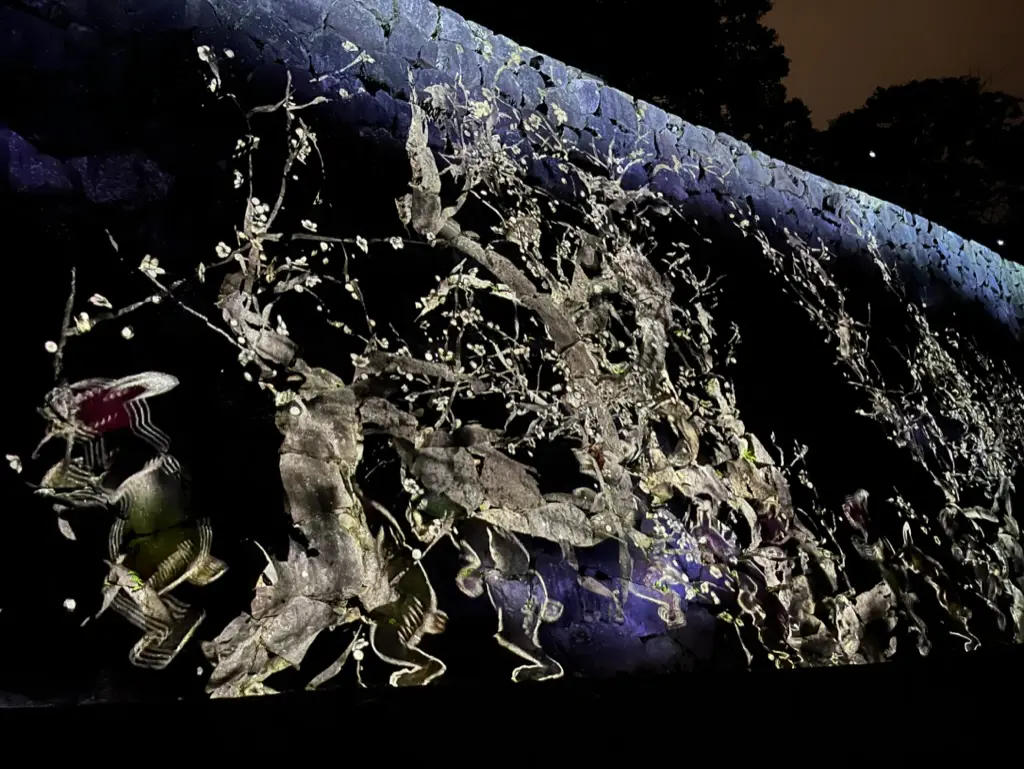
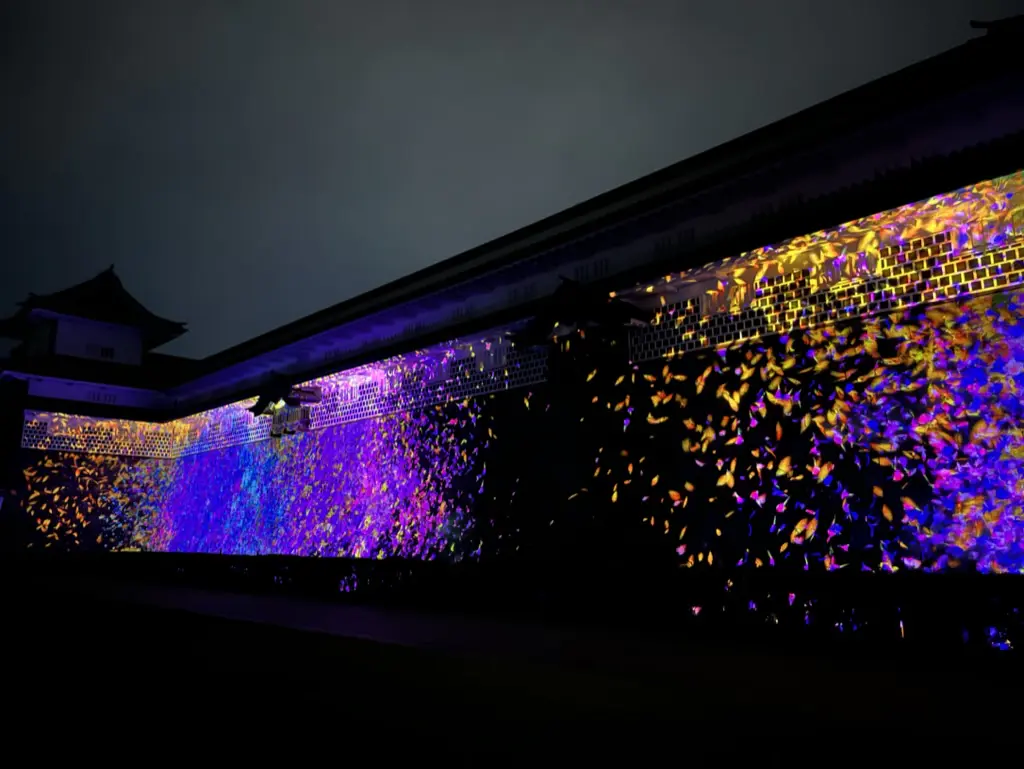
To show a day trip plan of Kanazawa, here is what Vivian and I did. We arrived at Kanazawa station around 11:30 am and did a quick souvenir explorer as Kanazawa station has a good selection of them. After that, we walked to Omicho Ichiba Market (a fish market), wandered around, and had a sushi lunch there. After lunch, we walked to Higashi Chaya District, swung by a cute shop with Hyakuman-san on our way, then had a gold leaf soft ice cream. We went back to Omicho Ichiba to have raw scallops as a snack.

After that, we walked through Oyama Shrine to Kanazawa Castle Park, then Kenroku-en garden. After Kenroku-en, we went to the 21st Century Museum. There are many arts that you can check out for free over there, including Blue Planet Sky by James TURRELL. We had some time before the Digitized Kanazawa Castle exhibition so we hopped on to a bar to have one beer. We enjoyed the exhibition for an hour but we could have stayed longer. Our dinner started at around 8 pm, which gave us approximately 9 hours to explore Kanazawa. During this time, we managed to visit most of the city’s top tourist destinations. We wrapped up a day at my favorite izakaya and had many delicious foods and drinks.
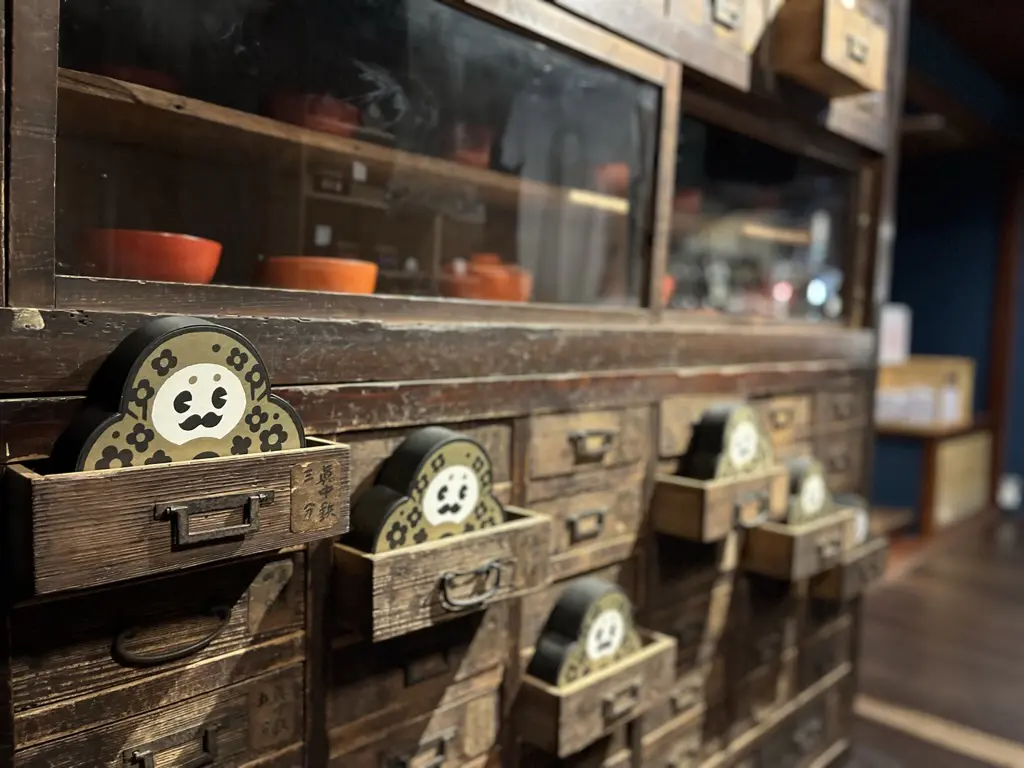
Conclusion
In our journey through Central Japan, from the tranquil Onsen of Kusatsu to the digital marvels of Kanazawa Castle, we discovered the diverse beauty and experiences this region has to offer. I hope our adventures inspire your own exploration of this captivating part of Japan!
Special thanks to Vivian for doing this great trip with me and letting me use photos of her in this blog post. Also, thanks to ChatGPT for reviewing my blog post and keep encouraging and motivating me.